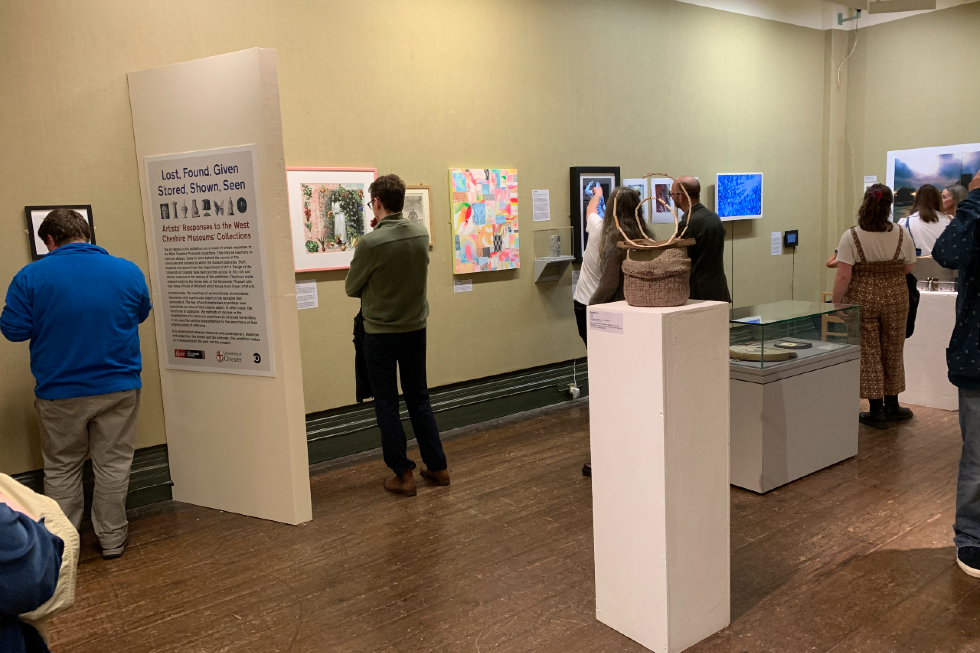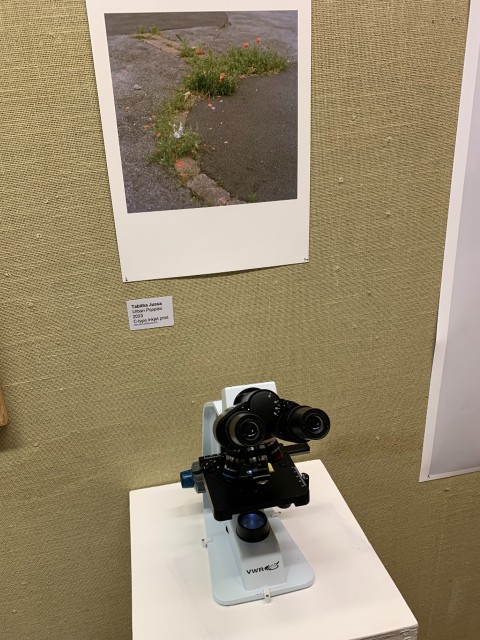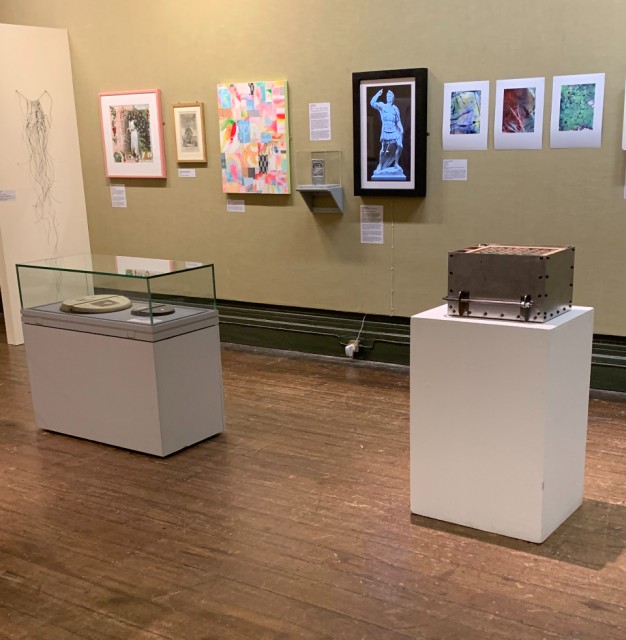Lost, Found, Given ~ Stored, Shown, Seen: Artists’ Responses to the West Cheshire Museums’ Collections – Reviewed

“Where does historical examination end and artistic response begin?” Hannah Harry considers an exhibition juxtaposing West Cheshire Museums’ collection with contemporary artists’ responses…
The question of how curation affects our way of seeing is central to Lost, Found, Given ~ Stored, Shown, Seen – a selection of artists’ responses to artefacts housed and displayed at Chester’s Grosvenor Museum. Many of the works here, displayed in most cases alongside the artefact that inspired them, raise the question of how the taxonomy of museum collections affects the way we respond to artefacts. Where does historical or scientific examination end and artistic response begin? How do these responses differ? And what does this suggest about the way museum collections influence our viewing habits?
Alongside the museum’s butterflies can be seen a historic photograph of young girls, arranged in rows as in a school photograph. This photograph is not an image of youthful gaiety, of young limbs in abandoned release or the fragility of childhood beauty, despite the flowers arranged so prettily on each young head. Instead, the girls are arranged in static rows according to height and age, each one in her exact place. Arranged like this, the girls can be contemplated with as much scrutiny as the butterflies alongside them, the intricacies of their clothing and facial anatomy observed in detail. We understand each girl in relation to her place within the group; her existence is recorded, documented, fixed – she has become a specimen.
Both girls and butterflies prompt us to consider the effect of mobility on the way we view an object; how much longer can a viewer spend contemplating a fixed artefact than a living specimen? And how does this affect the way we view and understand it?
The issue of time is addressed by David Raffo’s modern piece, Dwell Time – four photographs of metal and glass vessels in the museum collection, each photograph the result of an increased exposure time, resulting in a succession of images from a clear-cut reproduction of the vessels in all their detail to a shimmering blur of darkness and light. Raffo asks us to consider how the length of time we consider an object in a museum affects our memory of it. What do we remember from our brief encounter? Something functional? Interesting? Beautiful?
This theme permeates Tabitha Jussa’s contemporary botanical inkjet prints, in which the intimacy of our encounters becomes significant. Jussa’s magnified print of a poppy ovary is a gloriously organised riot of pattern and colour – yet another example of how scientific observation can prompt aesthetic delight and discovery. Jussa’s inclusion of a microscope containing a slide produced by James Hornell and dating from between 1895-1901 allows us to examine the beauty of natural patterns first hand.

Her decision to display a family medicine cabinet and private copy of Nicolas Culpeper’s British Herbal (originally published in 1653) alongside various medicinal items from the museum’s archive draws associations between scientific enquiry, aesthetic appreciation and the practical application of botany, leading us into the fascinating realm of folklore. Where is the dividing line between science, art and magic? Is there one at all?
The significance of generic boundaries is explored in Chris Millward’s highly playful Emperor Christophorous Molendinarius, a digital image and accompanying statement generated by artificial intelligence. Millward has inserted himself into Chester’s Roman past in somewhat futuristic fashion – by programming AI to add his facial features to an existing sculpture of a Roman general. A body of text, also generated by AI, presents an account of the life of the fictional Christophorus Molendinarius.

To an unsuspecting viewer, this piece of fiction and its accompanying image – of a sculpture which does not exist outside of the picture frame – could easily be taken for historical fact. Millward’s piece draws attention to the stylistic significance of how history is presented to us in museums and galleries and raises questions about the nature of historical veracity. Do we understand history to be more ‘truthful’ than art? Should we?
How truthful or otherwise is the small and beautiful etching by artist Greg Fuller? Fuller has used the traditional, laborious medium of etching, to produce an image that captures a particular quality of evening light at a specific Cheshire location – a bridge over the Sankey Navigational Canal. Here is a record of monochrome marks produced by the conjunction of the artist’s hand with the corrosive effects of acid on copper plate and the impression of ink on paper. The black spaces here are more than just pools of ink, the white more than simply paper.
How important is the specificity of a scene to such a representation? And what questions does this raise about the curation of artworks depicting Cheshire scenes in the museum collection? By reading such artworks primarily through the lens of the location depicted, do we miss a spiritual dimension to their meaning?
Stephen Clarke’s Carnival Queen raises comparable questions about our understanding of the past and its relationship to personal histories. His response to an historical engraving of a wicker man in the museum collection is a photomontage combining a 1947 photograph of his mother as Carnival Queen in Parr, St Helens, with rubbings of her floral wallpaper and a collection of images taken from his grandfather’s gardening books. The link here is the tradition of the May Queen and the question raised: what place do personal, yet shared histories have in museum collections and how can they shape our interpretation of the past?
Past; present; future; science; history; art.
Lost, Found, Given asks us to consider these generic boundaries with a view to questioning how they help shape the taxonomy of museum collections. At stake is the way we understand our relationship to the past, both individually and collectively.
Hannah Harry
Lost, Found, Given ~ Stored, Shown, Seen: Artists’ Responses to the West Cheshire Museums’ Collections continues at Grosvenor Museum, Chester, until 3 September
Exhibition install images courtesy Jeremy Turner





